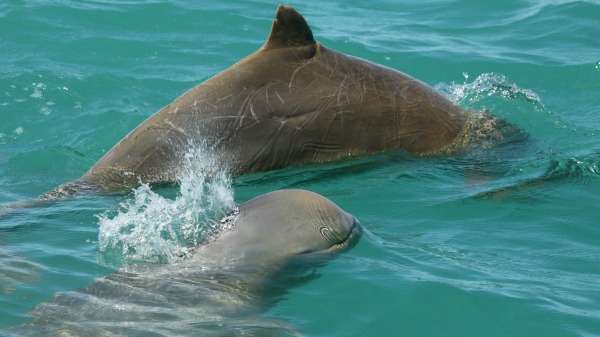Dolphin count reveals homebody habits

The Kimberley's resident dolphin populations seem to be homebodies who stay in the same area year-in year-out and also avoid mixing with their neighbours, according to research into how the mammals live.
The study is the latest in a long line of research by Murdoch University Cetacean Research Unit (MUCRU) scientists to provide more baseline data on the northwest's dolphins to help determine if management strategies protecting them are successful.
With the help of a squadron of volunteers in small boats the researchers surveyed 130km2 between 2012 and 2014 taking in Roebuck, Beagle, Cygnet and Cone Bays extending east to the Cambridge Gulf.
During this time they painstakingly counted Australian snubfin (Orcaella heinsohni), humpback (Sousa chinensis) and Indo-Pacific bottlenose dolphins (Tursiops aduncus).
They photographed and identified individual dolphins by the nicks and notches on the leading and tailing edges of the dorsal fins and catalogued 130 snubfin dolphins at Roebuck Bay (one of the largest counts ever) and a further 50 at Cygnet Bay.
Bottlenose dolphin numbered 160 in the waters off Beagle Bay, with a further 50 at Cygnet Bay. The humpbacks were much scarcer with no more than 20 at any one site.
MUCRU PhD student Alex Brown was part of the team. He says they surveyed sites multiple times observing the same individual dolphins each visit, suggesting they stay in the same area year after year.
One of the most surprising findings, he says, was the degree of separateness of the species despite them often being bracketed together for environmental impact studies.
"Each specie has its own specific preference for habitat and feeding on similar yet different prey species, and there also may be an element of competition between the different species," he says.
"For example we started at Cygnet Bay and could see all species in the space of a day yet when we went to other areas of the coast within 100kms, we wouldn't find anything but bottlenose dolphins and then further away again it was snubfin dolphins."
It reinforces the need for more research to better understand the species and their habitat and that a one-size-fits-all management policy won't do, he says.
He says while all three species studied are considered to have 'National Environmental Significance' under Commonwealth legislation, a lack of baseline data means they often given limited consideration in environmental assessments around the increasing number of coastal developments.
More information: Alexander M. Brown et al. Site-Specific Assessments of the Abundance of Three Inshore Dolphin Species to Inform Conservation and Management, Frontiers in Marine Science (2016). DOI: 10.3389/fmars.2016.00004
Provided by Science Network WA
This article first appeared on ScienceNetwork Western Australia a science news website based at Scitech.


















